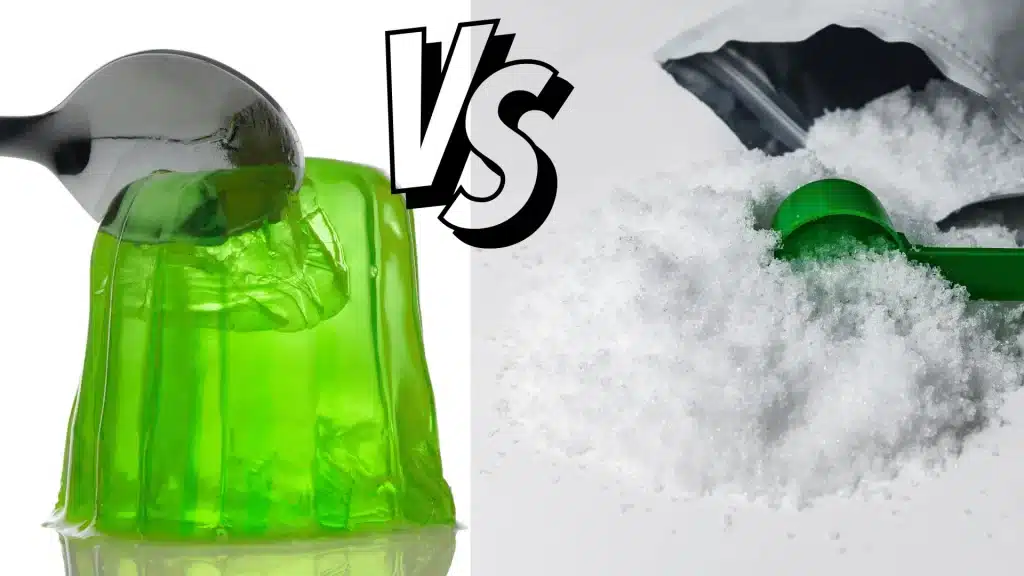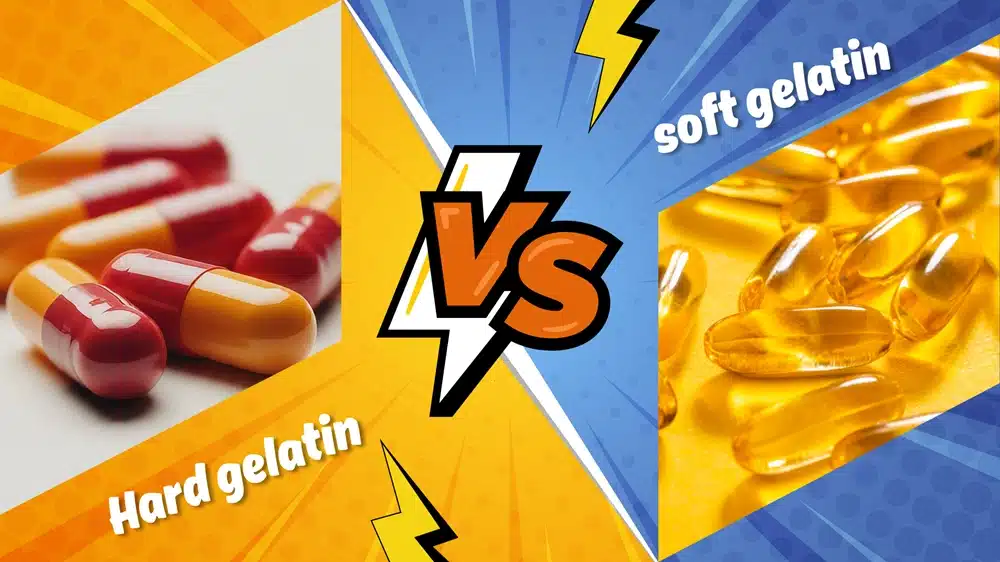Agar Agar vs Gelatin:Picture yourself in the kitchen, ready to create a dessert that’s both delicious and visually stunning. You’ve got your ingredients lined up, but the recipe calls for a gelling agent, and you’re torn between two options: agar agar or gelatin? It’s like choosing between a trusty old friend and a new, eco-conscious pal. Both can transform your liquid concoctions into wobbly wonders, but they come from different worlds and bring unique vibes to your dishes. As a home cook or a food enthusiast, understanding the differences between agar agar and gelatin can make or break your culinary masterpiece. Let’s dive into this gelatinous journey, exploring what these ingredients are, their benefits, whether they can swap places, and how to pick the perfect one for your needs. Trust me, by the end, you’ll be ready to whip up jellies, panna cottas, or even التغذية الرياضية supplements with confidence!
What is Agar Agar?
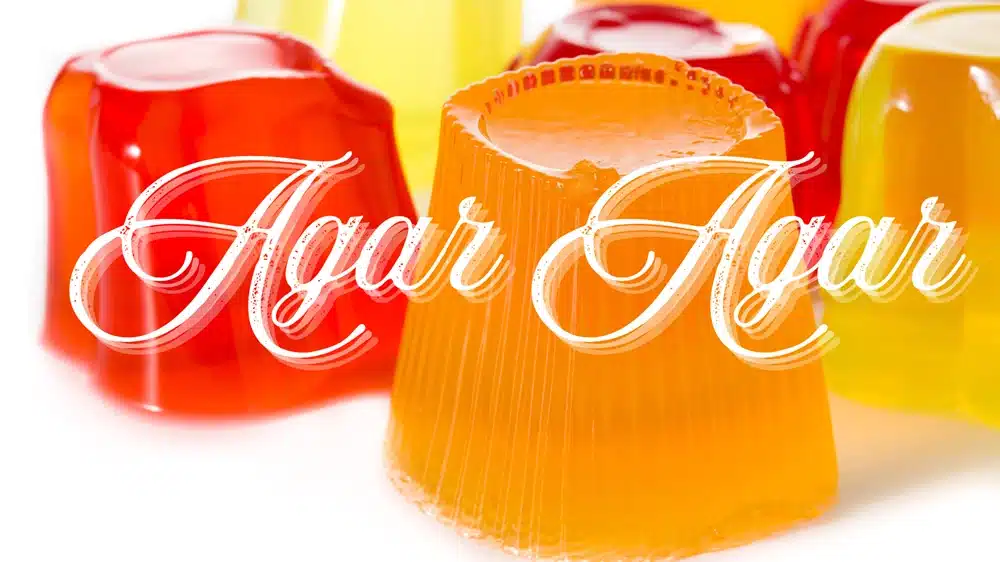
Agar agar, often just called agar, is like the unsung hero of the vegan kitchen. It’s a jelly-like substance extracted from red algae, specifically species like Gelidium and Gracilaria, found in the ocean’s depths. Imagine it as nature’s answer to creating firm, sliceable gels without a hint of animal products. Chemically, agar is a mix of polysaccharides—mostly agarose, with a dash of agaropectin—giving it its superpower to set liquids into a solid form .
You’ll find agar in various forms: powder, flakes, bars, or even strands. The powder, often produced through precise تصنيع المساحيق processes, is the go-to for most home cooks because it dissolves quickly and is easy to measure. In Asian cuisine, agar shines in desserts like Japanese anmitsu or colorful Southeast Asian jellies, but its talents extend beyond the kitchen. Ever heard of those petri dishes in science labs? Yep, agar’s the star there too, providing a solid base for growing bacteria and fungi. It’s also used in مكونات المكملات الغذائية for its gelling properties and nutritional perks. Talk about a multi-tasker!
ما هو الجيلاتين؟
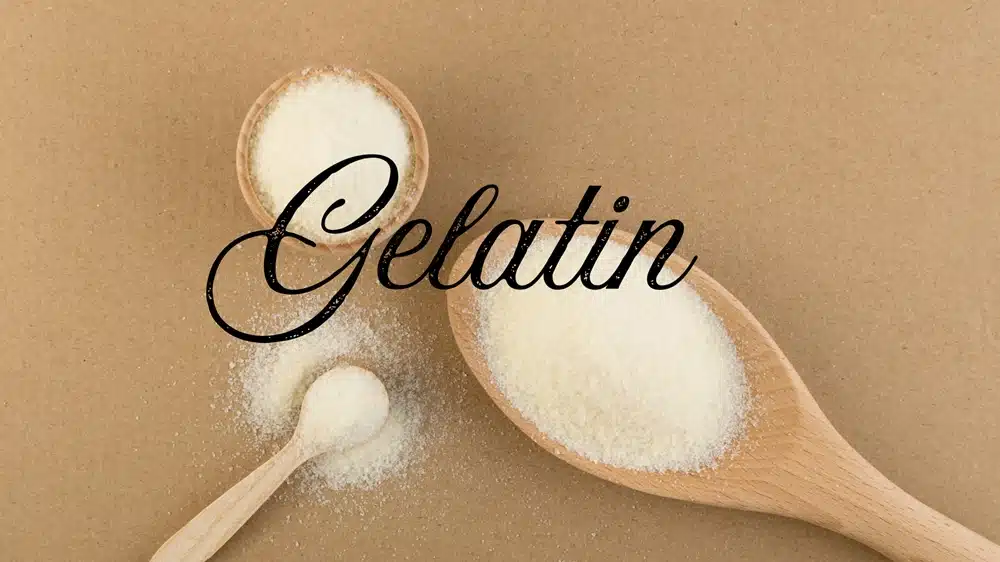
Now, let’s meet الجيلاتين, the classic gelling agent that’s been jiggling its way into our hearts for centuries. Gelatin is a protein derived from collagen, which is extracted by boiling animal skin, bones, and connective tissues—usually from cows or pigs . It’s like the culinary equivalent of turning leftovers into gold. The process breaks down collagen into smaller peptides, creating a colorless, flavorless substance that transforms into a wobbly gel when cooled.
Gelatin comes in powder or sheet form, with the powder being a favorite for its ease of use in recipes. It’s the magic behind childhood favorites like jellies, marshmallows, and creamy panna cotta. Beyond desserts, gelatin is a staple in pharmaceuticals (think vitamin capsules) and cosmetics, thanks to its ability to form smooth, flexible gels. In التغذية الرياضية, gelatin is often included in products aimed at supporting joint health, making it a versatile ingredient in both food and wellness.
Benefits of Agar Agar
Agar agar isn’t just a vegan lifesaver; it’s packed with health benefits that make it a standout choice. Its high fiber content—about 80% by weight—makes it a darling for those watching their waistlines. When consumed, agar forms a gel in your stomach, helping you feel full and potentially reducing calorie intake, which is why it’s a key player in Japan’s “kanten diet” for weight loss . A 2019 study found that agar from Gelidium amansii helped reduce body weight and cholesterol levels in animal models, though human studies are still catching up .
Beyond weight management, agar’s fiber promotes healthy digestion by acting as a natural laxative, easing constipation and supporting gut health . It’s also rich in minerals like calcium, iron, and magnesium, which are essential for strong bones, oxygen transport, and muscle function. Some early research suggests agar may help regulate blood sugar by slowing glucose absorption, which could be a boon for managing diabetes, but more studies are needed to confirm this . For those creating مكونات المكملات الغذائية, agar’s nutritional profile and gelling ability make it a top choice for vegan-friendly capsules and tablets.
فوائد الجيلاتين
Gelatin, on the other hand, brings its own set of benefits to the table, largely due to its high protein content—nearly 99% protein by weight . It’s rich in amino acids like glycine and proline, which are building blocks for collagen, the protein that keeps your joints, bones, and skin in tip-top shape. A 2017 study suggested that gelatin supplements could reduce joint pain and improve function in people with osteoarthritis, making it a favorite in التغذية الرياضية for athletes looking to support recovery .
Gelatin also shines for skin health. Its collagen-derived amino acids may improve skin elasticity and hydration, potentially keeping those wrinkles at bay . For your gut, gelatin might help repair the intestinal lining, which could be a game-changer for conditions like leaky gut syndrome, though human studies are still limited . Some folks even claim gelatin helps with weight loss by promoting satiety, similar to agar, but the evidence here is more anecdotal than definitive . Plus, gelatin can strengthen hair and nails, giving you that extra glow. In صيغة مخصصة supplements, gelatin is often used for its protein content and ability to form smooth, digestible capsules.
Here’s a quick comparison of their health benefits:
| المزايا | أجار أجار | الجيلاتين |
|---|---|---|
| إنقاص الوزن | Promotes satiety via fiber | May promote satiety via protein |
| صحة الجهاز الهضمي | High fiber, acts as a laxative | May repair gut lining |
| Joint/Bone Health | Contains calcium, magnesium | Supports collagen production |
| صحة البشرة | أدلة محدودة | Improves elasticity, hydration |
| المحتوى الغذائي | High in fiber, minerals | High in protein, amino acids |
| التحكم في نسبة السكر في الدم | May regulate glucose | أدلة محدودة |
Can Agar Agar Be Used Instead of Gelatin?
So, you’re eyeing a recipe that calls for gelatin, but you’re vegan or just curious about agar agar. Can you make the switch? The answer is yes, but it’s not a simple one-to-one swap. Agar agar and gelatin both create gels, but they behave differently in the kitchen.
Agar agar sets into a firmer, more brittle gel compared to gelatin’s soft, elastic texture. It’s like the difference between a crisp apple and a juicy peach—one’s got a bite, the other melts in your mouth. Agar requires boiling (at about 85°C) to dissolve fully and sets quickly at around 40°C, even at room temperature . Gelatin, on the other hand, dissolves in warm water (around 50°C) and needs refrigeration to set, melting again at body temperature for that creamy mouthfeel .
When substituting, you’ll need less agar than gelatin. A general rule is to use about one-third the amount: 1 teaspoon of agar powder can replace roughly 3 teaspoons of gelatin powder . For example, if your panna cotta recipe calls for 1 tablespoon of gelatin, try 1 teaspoon of agar powder, but adjust based on the desired firmness. Be warned, though—agar’s quick-setting nature means you need to work fast, and it might not blend as smoothly with creamy ingredients like whipped cream unless you nail the timing . Manufacturers creating الصيغ المخصصة for vegan desserts often rely on agar for its plant-based appeal, but they tweak ratios carefully to avoid a rubbery texture.
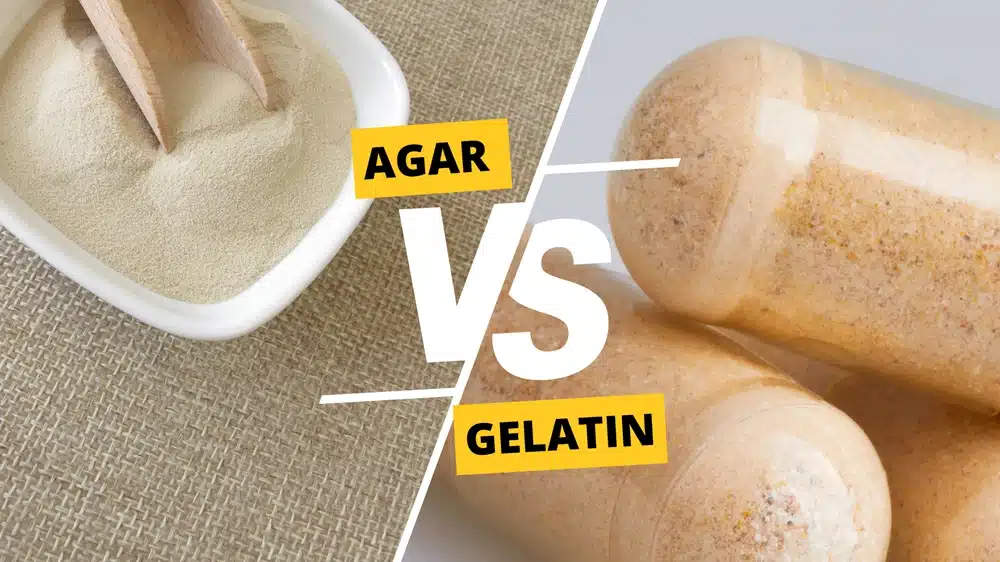
Agar Agar vs Gelatin: How Do You Choose?
Choosing between agar agar and gelatin is like picking the right tool for a job—it depends on what you’re trying to achieve. Here are the key factors to consider:
- التفضيلات الغذائية: If you’re vegan, vegetarian, or catering to those diets, agar agar is your go-to. It’s 100% plant-based, derived from seaweed, and aligns with ethical and religious dietary restrictions . Gelatin, being animal-derived, is off the table for these groups but fine for omnivores.
- Texture Goals: Want a firm, sliceable gel for a terrine or Asian-style jelly? Agar agar’s your best bet. Need that soft, wobbly texture for a panna cotta or marshmallow? Gelatin’s melt-in-the-mouth quality is unmatched . For التغذية الرياضية products, gelatin’s elastic texture is often preferred in protein gels.
- Temperature Stability: Agar agar holds its shape at higher temperatures, making it ideal for warm climates or dishes served at room temperature . Gelatin, however, needs to stay chilled to maintain its gel, which is perfect for cold desserts but less practical for outdoor events.
- Recipe Requirements: Some recipes are tailored to one gelling agent. Traditional Japanese kanten desserts rely on agar’s firm set, while Western classics like jellies lean on gelatin’s creamy texture. Check your recipe to see what’s recommended, and adjust if substituting.
- Health Needs: If you’re after fiber and minerals, agar agar’s a winner, especially for digestive health . For protein and joint support, gelatin’s amino acids make it a strong contender, particularly in مكونات المكملات الغذائية .
عند الحصول على هذه المكونات، ابحث عن منتجات عالية الجودة من الموردين الذين يقدمون حلول تصنيع المعدات الأصلية و خدمات التعبئة والتغليف لضمان النقاء والنضارة. سلطت دراسة أجريت عام 2023 الضوء على استدامة الأجار كخيار نباتي، مما قد يؤثر على الطهاة المهتمين بالبيئة، في حين أن أصول الجيلاتين الحيوانية تثير مخاوف بشأن التأثير البيئي . في نهاية المطاف، يعتمد اختيارك على قيمك والطبق الذي تصنعه والتجربة التي تريد تقديمها.
How to Use Them in Your Kitchen
هل أنت مستعد للطهي؟ إليك كيفية الاستفادة القصوى من أجار أجار والجيلاتين:
- أجار أجار: قم بإذابة 1-2 ملعقة صغيرة من المسحوق في كوب واحد من السائل (ماء أو عصير أو حليب) عن طريق تركه يغلي لمدة 4-5 دقائق مع التحريك باستمرار لتجنب التكتلات. اسكبه في قوالب واتركه في درجة حرارة الغرفة. للحصول على هلام أكثر ليونة، قلل الآجار قليلاً. يُحفظ في وعاء محكم الإغلاق للحفاظ على نضارته كما هو مضمون الجودة خدمات التعبئة والتغليف.
- الجيلاتين: قم بإذابة 1 ملعقة كبيرة من المسحوق في ¼ كوب من الماء البارد لمدة 5 دقائق، ثم قم بإذابة في ¾ كوب من السائل الدافئ (وليس الغليان، لأن الحرارة يمكن أن تضعف قوة التبلور). يبرد في الثلاجة حتى يتماسك. بالنسبة للصفائح، يُنقع في ماء بارد حتى يصبح طرياً، ثم يُضاف إلى سائل دافئ. إن تعدد استخدامات الجيلاتين يجعله عنصرًا أساسيًا في صيغة مخصصة الحلويات.
اختبر دائمًا وصفتك بدفعة صغيرة لإتقان القوام، واستشر أخصائي تغذية إذا كنت تستخدمها في مكونات المكملات الغذائية لأهداف صحية محددة.
الأسئلة الشائعة
أيهما أفضل، آجار آجار أم الجيلاتين؟
أجار أجار: نباتي، نباتي، قوة تبلور أقوى، يثبت في درجة حرارة الغرفة، مقاوم للحرارة.
الجيلاتين: مشتق من الحيوانات، قوامه أنعم، وهو أفضل للحلويات الكريمية مثل البانا كوتا.
يعتمد الأفضل على الاحتياجات الغذائية والقوام المفضل.
ما هي عيوب آجار آجار؟
قوام كريمي أقل دسمًا من الجيلاتين.
يتطلب حرارة أعلى للذوبان (الغليان).
يمكن أن يكون من الصعب العثور عليها وأكثر تكلفة.
قد يثبت أكثر من اللازم إذا أفرط في استخدامه.
هل يمكنني استخدام أجار أجار بدلاً من الجيلاتين في كعكة الجبن؟
نعم، يعمل أجار أجار في كعكة الجبن، وخاصةً في النسخ التي لا تُخبز. استخدم 1-2 ملعقة صغيرة من مسحوق أجار لكل 2 كوب سائل، واغليها لتذوب ثم تبرد قليلاً قبل إضافتها. قد يكون القوام أكثر صلابة من الجيلاتين.
لماذا أجار أجار أجار باهظ الثمن؟
أجار أجار مكلف بسبب مصدره من الطحالب البحرية (الطحالب الحمراء)، والحصاد الذي يتطلب عمالة كثيفة، والمعالجة المعقدة. كما أن محدودية العرض والطلب النباتي المتزايد يؤديان إلى ارتفاع الأسعار.
هل أجار آجار آجار صحي؟
نعم، أجار أجار أجار منخفض السعرات الحرارية وغني بالألياف ونباتي. قد يساعد على الهضم والتحكم في الوزن ولكنه يفتقر إلى العناصر الغذائية المهمة. يمكن أن يسبب الإفراط في تناوله مشاكل في الجهاز الهضمي.
الخاتمة
في المواجهة بين أجار أجار أجار والجيلاتين، لا يوجد فائز واحد يناسب الجميع. أجار أجار، بجذوره النباتية وهلامه الصلب الغني بالألياف، هو حلم للنباتيين والباحثين عن فوائد للجهاز الهضمي. أما الجيلاتين بجذوره النباتية المليئة بالبروتين والمشتق من الكولاجين فهو كلاسيكي للحلويات الكريمية ودعم صحة المفاصل. سواء كنت تصنع جيلي نباتي أو بانا كوتا حريري، فإن فهم الاختلافات بينهما - الملمس ودرجة الحرارة والملاءمة الغذائية - يمكّنك من الاختيار بحكمة. لذا، احصل على مكوناتك، وجرّب بثقة، ودع عوامل التبلور هذه تبعث الحياة في إبداعاتك في الطهي!

